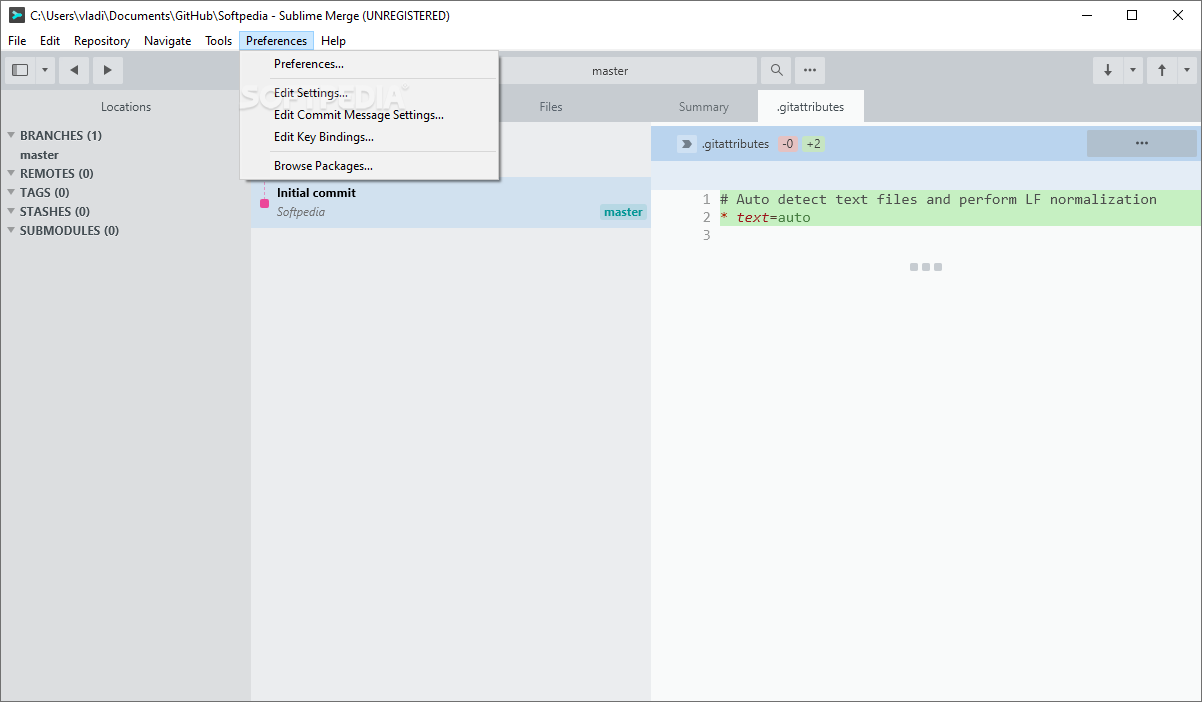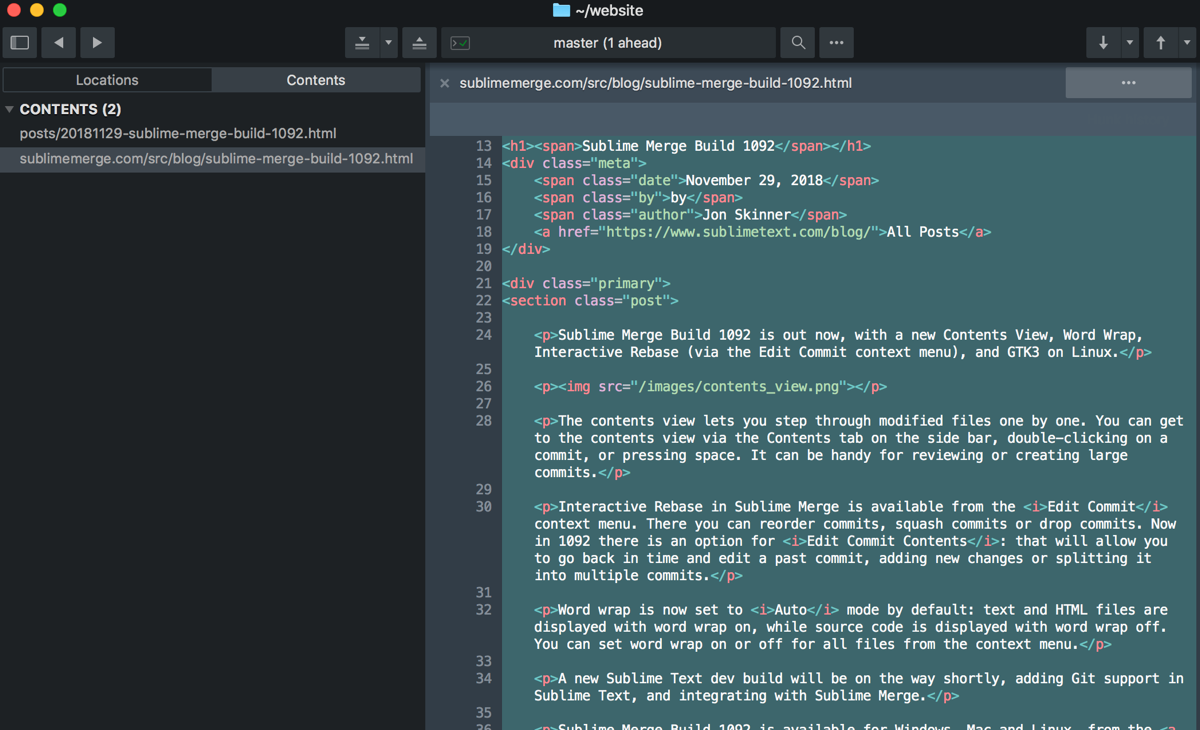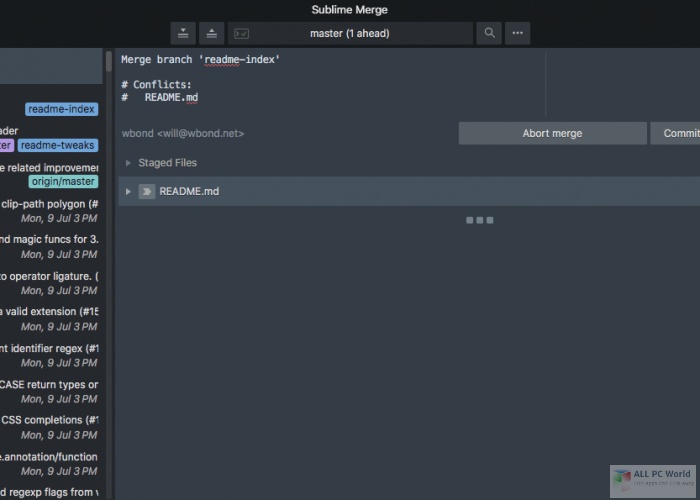
In fact there are all kinds of ways for advanced users to configure the cmd line, but that is beyond the scope of this answer. gitconfig entry above, 2 lines are suggested as the cmd line. Each file will be contained in a separate pane of its GUI interface. If properly configured a Meld window will open displaying 3 files. You start it very easily with: git mergetool Mergetool can now be used to resolve the merge conflicts. If there is a merge conflict git will display something like this: $ git merge branch_nameĬONFLICT (content): Merge conflict in file_nameĪutomatic merge failed fix conflicts and then commit the result.Īt this point file_name will contain the partially merged file with the merge conflict information (that's the file with all the > and <<<<<<< entries in it). Before using git mergetool you perform a merge in the usual way with git. You do NOT use git mergetool to perform an actual merge. # Choose one of these 2 lines (not both!) explained below.Ĭmd = meld "$LOCAL" "$MERGED" "$REMOTE" -output "$MERGED"Ĭmd = meld "$LOCAL" "$BASE" "$REMOTE" -output "$MERGED" Like difftool you can set the GUI program on the command line using -t / -tool= but, as before, it makes more sense to configure it in your. Meld) to resolve the merge conflicts that have occurred during a merge. Git mergetool allows you to use a GUI merge program (i.e. How do I set up and use Meld as my git mergetool? If you want them the other way around simply swap them around like this: cmd = meld "$REMOTE" "$LOCAL"įinally the prompt = false line simply stops git from prompting you as to whether you want to launch Meld or not, by default git will issue a prompt. The order of the Meld GUI window panes can be controlled by the order of $LOCAL and $REMOTE in cmd, that is to say which file is shown in the left pane and which in the right pane. If properly configured a Meld window will open displaying the diff using a GUI interface. You use git difftool in exactly the same way as you use git diff. Meld) instead of displaying the diff output in your terminal.Īlthough you can set the GUI program on the command line using -t / -tool= it makes more sense to configure it in your. Git difftool displays the diff using a GUI diff program (i.e. How do I set up and use Meld as my git difftool? Note: It is not necessary to use the same program as both your difftool and mergetool, different programs can be set for both.

It took me a while to piece together everything I wanted to know. Note: At least on Windows, it appears that all Git repositories on ejectable drives are considered unsafe and changing the ownership does not seem to work.Although much of the information in this question and answer is available on StackOverflow, it is spread out over lots of pages and among other answers which are either wrong or misleading.

change the Git repository owner to www-data.

This may have security implications, so refer to your security person first. Note: This requires user with the following contents: www-data ALL=(ubuntu) NOPASSWD: /usr/bin/git

This adds the safe group to file ~/.gitconfig as shown in this example: Git config -global -add safe.directory /home/repon trust the Git directory (do it if you know the directory contents are safe).
#Homebrew sublime merge update
This started appearing with the release of the Git 2.35.2 security update which fixes vulnerabilities described here.


 0 kommentar(er)
0 kommentar(er)
